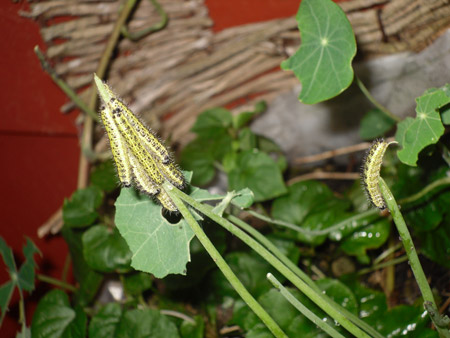
| HOME |
| NERVE |
| REVIEWS |
| ARCHIVE |
| EVENTS |
| LINKS |
| ABOUT US |
| CONTRIBUTORS |
| BACK ISSUES |
| CONTACT US |
 |
 |
Fireweed*
By Sandra
Gibson
Photographs by Geoff Edwards
Banned from Page Three
September 2012
Inspired by the proliferation of planting everywhere I looked, and by Monet’s use of the plant at his garden at Giverny, I vowed to grow nasturtiums in every available cranny. So I did and they were glorious. I use the past tense because although they survived the plague of blackfly this year, they rapidly became shredded by caterpillars to the extent that only stalks remained. Not only was my garden invaded by cabbage whites, there was also the army of molluscs audibly munching for Britain during damp twilights, which even the blackbirds and the occasional hedgehog failed to vanquish. I realise I am using the language of warfare here because of my presumption that the garden is MINE and I have dominion over these annoying creatures who have decimated my plant pleasure.
I stopped growing lilies because of slug – I nearly wrote thug - damage and the recent problems with lily beetles. I could not stomach the aesthetic outrage I felt when I saw a slug eating a pristine white-pink bloom when it had a garden full of succulent foliage to go at. The sight of that sludge brown slimy creature devouring Lily’s virginal throat nauseated me to the point where I considered salt. My father used salt without compunction, but that sickened me too. The reader will notice that this is all about me; no consideration has been shown for Les Cargo, my collective name for molluscs. And this season, it has felt as if my tiny watery garden was indeed carrying a cargo of pests.
Pests – another pejorative word; I have complicated feelings about all this. I wouldn’t kill anything but that doesn’t stop me feeling murderous. Yet I am much less harsh about snails devouring stuff. That’s because they have the cuteness factor bestowed on them by their neat trick of carrying their home about, like a caravan, thus covering much of their slimy outrageousness and making them acceptable images for kids’ books and TV programmes. Lily beetles are such a divine bright red colour that their beauty takes your breath away, whilst their mouths do for your Madonna lilies. And caterpillars, especially the hairy ones, are a wriggling munch machine that makes you smile and you know that by one of nature’s tricks of metamorphosis this daft creature will transform into a flying petal, a poetic moment of grace and transient beauty. But I have no such indulgence for the sluggishly mobile turds making my movement across the patio – well paving stones – unpleasant. It’s a horrible hazardous squelch to step on them.
I acknowledge that none of this account has been about ecological balance or the equal right of sentient creatures to exist side by side with human predators. Etc. Those are separate topics. What I want to say here is that some living beings have a stronger chance to survive than others, simply because they are better looking. Wildlife organizations have their pin-ups, which seem not to include worm-like slimy candidates.
And we also have this attitude to our own species.
To read other Fireweed columns click here
*Also known as Rose Bay Willow Herb, the prolific wild flower called Fireweed, five feet tall with spikes of magenta flowers, cheers the hearts of those whose cityscape has become a bomb site or whose buildings have been cleared by machine. The dormant seeds spring to life after destructive events such as forest or man-made fires, hence the name, Fireweed. This occasional column will celebrate the persistence of wildlife in urban conditions.